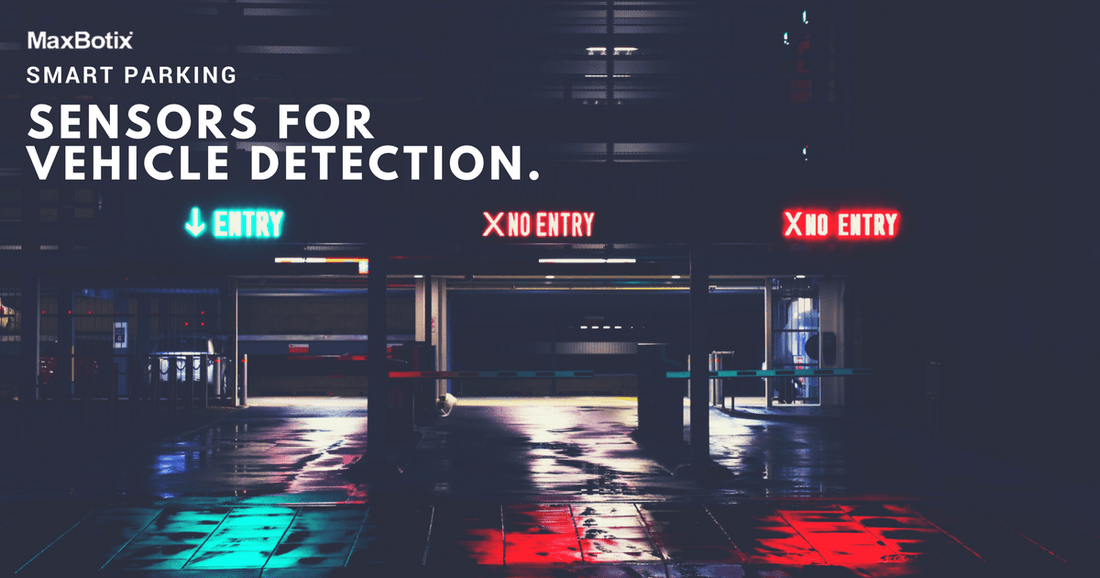- To reduce parking and traffic congestion.
- To build a scalable solution.
- To reduce the impact of emissions on human health.
What is Smart Parking?
Smart Parking is a parking strategy that combines smart parking technology and human innovation in an effort to use as few resources as possible like fuel, time and space to achieve faster, easier and denser parking of vehicles for the majority of the time they remain idle. – ParksmartHow Parking Sensors for Vehicle Detection Work
Information about parking spaces in a certain area is collected and processed in real-time by smart parking sensors to place vehicles in those available parking spaces. Like smart waste management, it allows the optimization of workforce management and makes it easier for drivers to park. Parking meters are also developed with sensors. They automatically expire what time is left on a meter when the vehicle departs the stall. It forces the next driver to have to put more money in the meter, no time is rolled over. In parking structures, sensors are used at kiosks, booths, and drive-thrus to track the entrance and departure of vehicles and in some cases, street parking. For these types of applications, we offer two options for vehicle detection.
ParkSonar-EZ
Our ParkSonar-EZ line is mainly used in indoor parking or covered environments. It's designed to be in a protected indoor application. It's a low cost, high-performance ultrasonic sensor that also allows the integration of several sensors into one system with little to no effect from sensor interference. The ParkSonar-EZ sensor is designed for the simultaneous operation of multiple sensors in one environment. Each ParkSonar-EZ sensor is tolerant of approximately 14 or more nearby sensors, depending on sensor mounting and environment.

Using Multiple Sensors in a Parking System
The ParkSonar-EZ sensor is designed to function alongside other sensors operating in the same space, at the same time, on the same frequency. Each Parksonar-EZ sensor is tolerant of approximately 14 or more nearby sensors, depending on the environment and mounting. The main applications this sensor is used in include:- Parked car detection
- Proximity zone detection
- Sheltered drive-thrus (fast-food restaurants, banks, etc.)
- Non-condensing environments only
- Designed for protected indoor environments.
MB8450- USB- Car Detection Sensor
We designed the Car Detection Sensor as a weather-resistant, low-cost USB option to detect the side of a vehicle in a drive-through. Multiple sensors can be used together in one system with little effect from the sensor to sensor interference. The sensors use a USB Micro-B connector for interfacing. Each sensor is small in size with holes on the PCB for easy mounting.Mounting Height of the MB8450
When mounting the MB8450 USB-CarSonar-WR, the recommended placement height of the transducer is between 46.5 cm and 70.5 cm above the ground. This range in mounting height helps to ensure that the sensor will be pointed at the side panel of most vehicle makes and models for more accurate detection information. Mountings lower than 46 cm may cause the sensor to fail to detect vehicles with high ground clearance such as trucks, and mountings that place the transducer higher than 71 cm may cause the sensor to fail to detect lower profile vehicles such as sports cars. The main applications this sensor is used in include:
The main applications this sensor is used in include:
- Drive-thru ATMs
- Drive-thrus
- Automated displays and advertising
- Proximity zone detection
- Kiosks and booths
- Multi-sensor arrays
- Car park signs
- Smart parking meters
- Parked car detection
Advancements in Parking Technology
Smart parking solutions leverage data processing and sensor technology to optimize urban parking solutions. The smart parking framework has a few essential components to the success of its operation.-
- Sensors, like our
- The Sensor Solution - will provide the data of whether the parking space is occupied or not.
- A Software solution – to collect data and process on the backend.
- Data Delivery – To display the information on available space in the parking structure, made visible to drivers and operators.
Who Benefits Most From Smart Parking?
According to this article written on Leverege , those that benefit most from smart parking solutions includes drivers and cities.How Smart Parking Helps Drivers
Limited parking spaces in certain areas is a common problem for all drivers. A smart parking system helps drivers efficiently find a parking space without the inconvenience of circling blocks, wasting fuel, and wasting valuable time. Our vehicle detection sensors work well to develop this IoT application.How Smart Parking Helps Cities
Smart parking solutions can produce data showing the trends in parking lots and users. Lot owners and city planners can use the data collected to make improvements for parking and traffic flow.Our Goal in Parking System OEM Applications
- Provide a competitively priced product to be integrated into OEM parking systems.
- Simplify Operations
- Maximize Profits
Featured Sensors for Smart Parking:
MB1001 ParkSonar-EZ-72
Features of the MB1001, ParkSonar-EZ-72, include one-inch resolution, both proximity, and range information for the nearest detectable target, and various output options: high/low logic level and RS232 serial.
Buy NowMB8450 Car Detection Sensor
Features of the weather resistant MB7384, HRXL-MaxSonar-WRST, include millimeter resolution, range information from 500mm to 5000mm for the nearest detectable target, heightened sensitivity over our standard sensors, a 6Hz read rate, and various output options: pulse-width, analog voltage, and TTL serial.
Buy NowBenefits of Using MaxBotix Sensors
- Low power consumption
- Sensor accuracy
- Observe the presence of vehicles with accurate, real-time vehicle detection
- Monitor the flow of vehicles
- Get detailed, real-time vehicle count information




